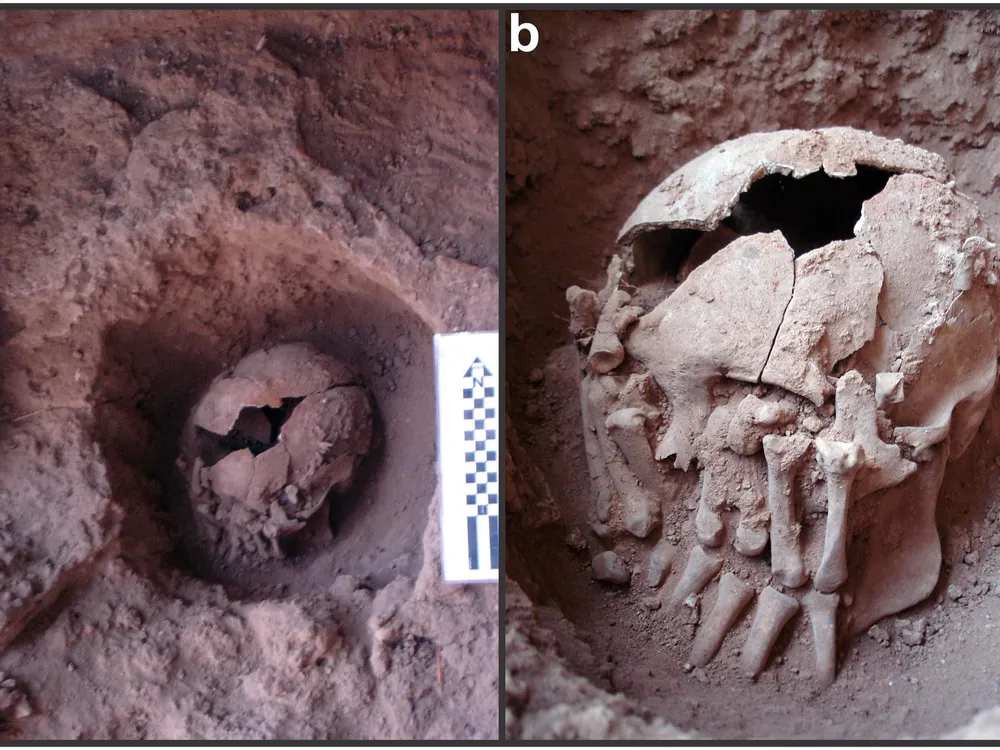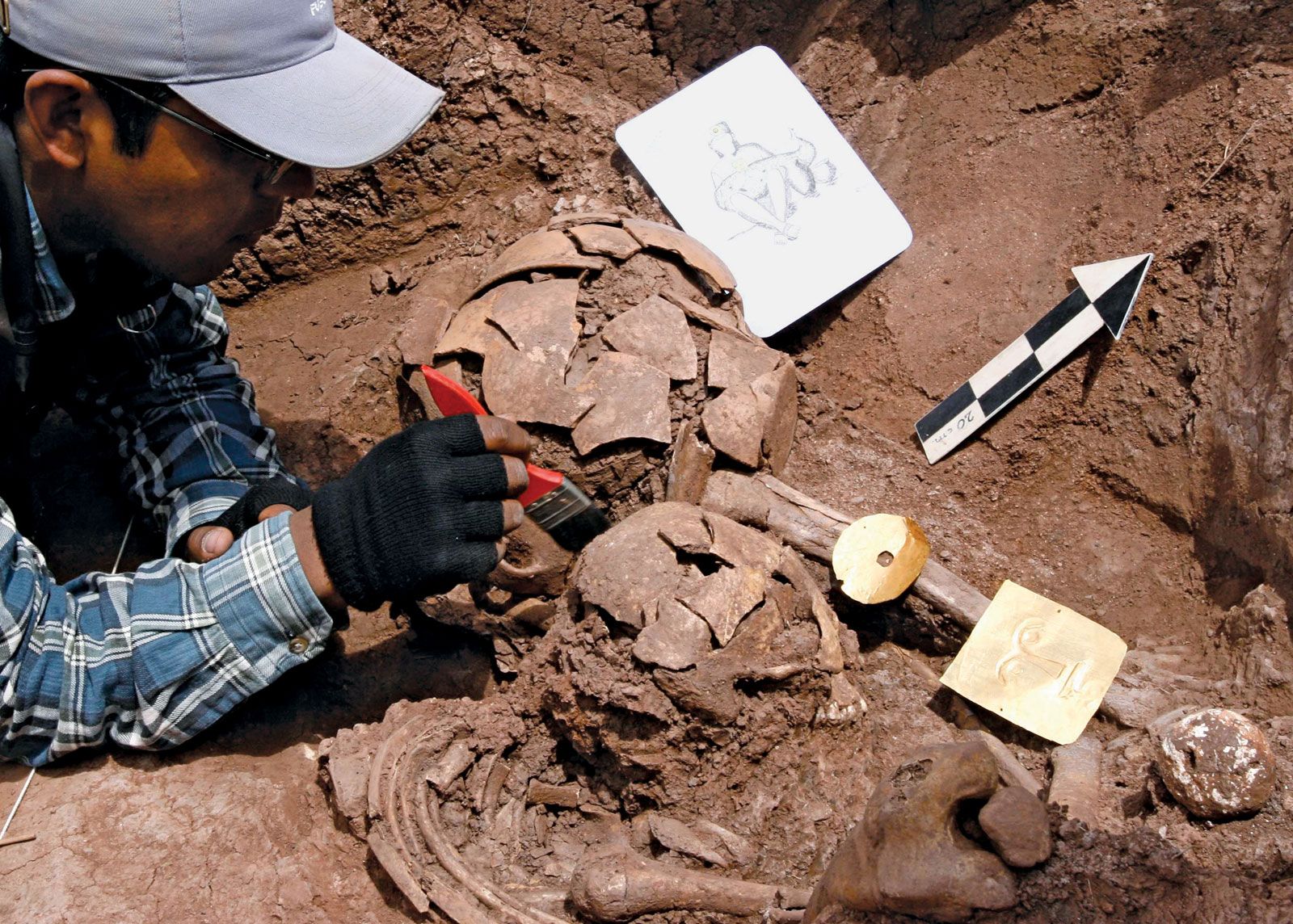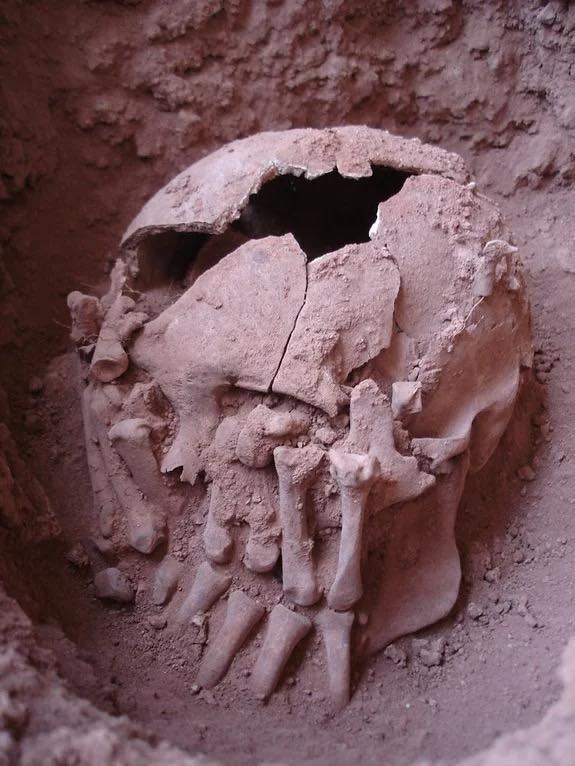Archaeologists have recently uncovered a 9,000-year-old human skull in a cave in Brazil, suggesting that it may be the oldest evidence of ritual decapitation in the western hemisphere. The skull was found in the Lapa do Santo site, located north of Belo Horizonte, and its discovery challenges previous beliefs about ancient South American decapitation rites. This finding sheds new light on the burial practices and cosmological beliefs of early hunter-gatherer communities in the Americas.
Unearthing the Ancient Skull

In 2007, archaeologists conducting a dig in the limestone cave of Lapa do Santo made an astonishing discovery. Buried just two feet below the surface, they found a 9,000-year-old skull placed under limestone slabs. The site, known for its human occupation dating back 12,000 years, has now revealed what could be the oldest-known example of ritual decapitation in the Americas. This finding is significant because previous evidence of beheaded remains in the region only dated back 3,000 years.
Insights into Ancient Rituals
The newly discovered skull provides insights into the beliefs and practices surrounding death in ancient South American communities. Lead author André Strauss explains that the absence of wealth goods or elaborate architecture at Lapa do Santo suggests that the inhabitants used the human body as a means to express their cosmological principles regarding death. The ritualized decapitation found in this burial attests to the early sophistication of mortuary rituals among hunter-gatherers in the Americas.
The Complexity of the Burial

The decapitated skull found at Lapa do Santo was that of a young man who was a member of the community. It was discovered with two severed hands placed over its face, indicating a ritual pose. This burial is the most complex and intricate one found at the site so far. The markings on the vertebrae suggest that the decapitation occurred after the person’s death, underscoring the significance of this ritual act.
A Geographical Expansion of Decapitation Rites
This discovery challenges previous assumptions about the geographical distribution of decapitation rites in the early Holocene period. The finding at Lapa do Santo extends the known range of decapitation by more than 2,000 kilometers, indicating that this practice was not limited to the western region of the continent. Lead author André Strauss emphasizes the importance of this expansion, as it provides insight into the cultural and ritual diversity of early hunter-gatherer communities in the Americas.
The recent discovery of a 9,000-year-old decapitated skull at the Lapa do Santo site in Brazil sheds new light on ancient burial practices and cosmological beliefs in the Americas. This finding challenges previous beliefs about the timeline and geographical distribution of decapitation rites, demonstrating the early sophistication of mortuary rituals among hunter-gatherer communities. As archaeologists continue to uncover new evidence, our understanding of the rich cultural heritage of the Americas continues to evolve, revealing the complexity and diversity of ancient societies in this part of the world.
